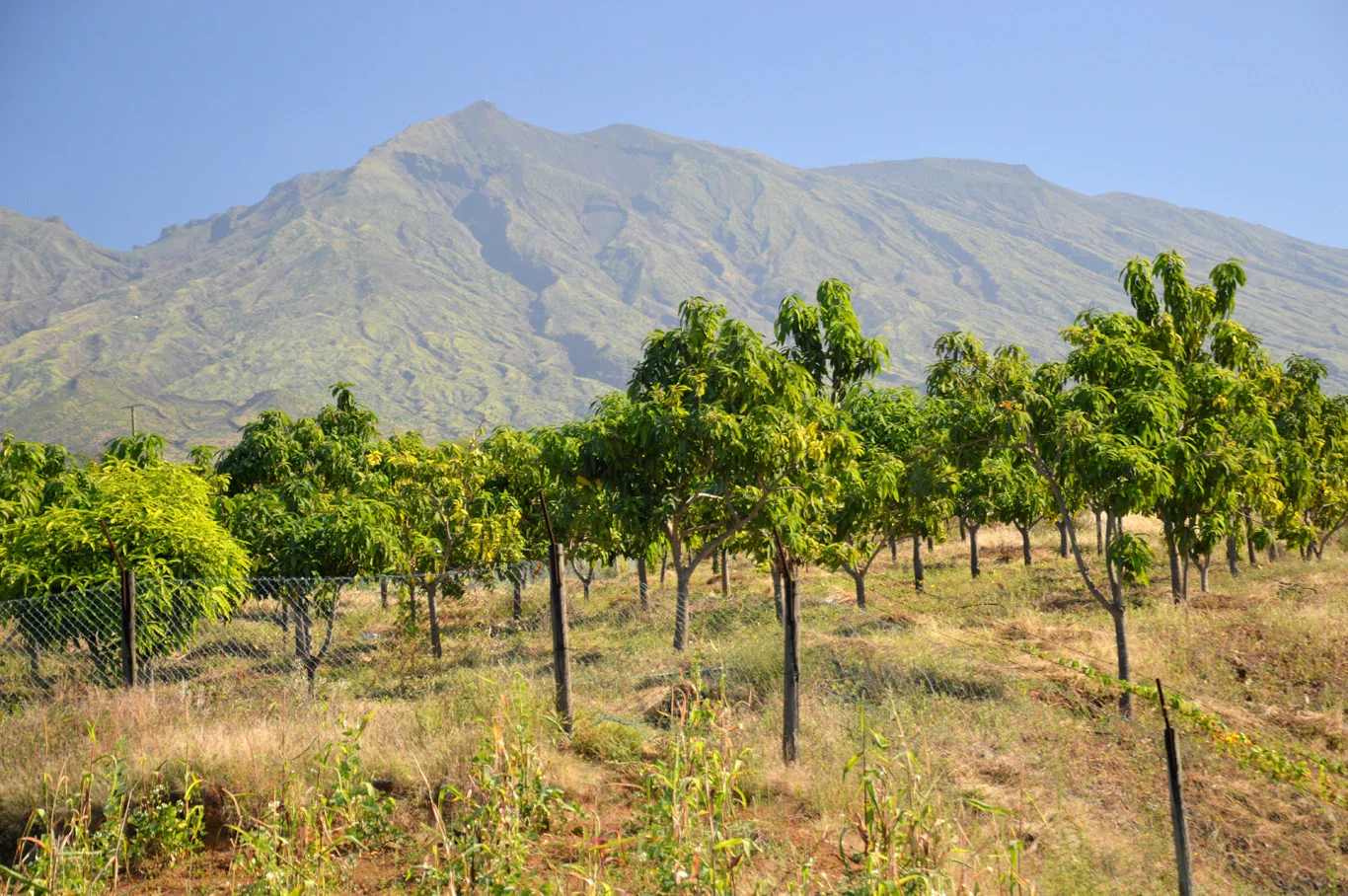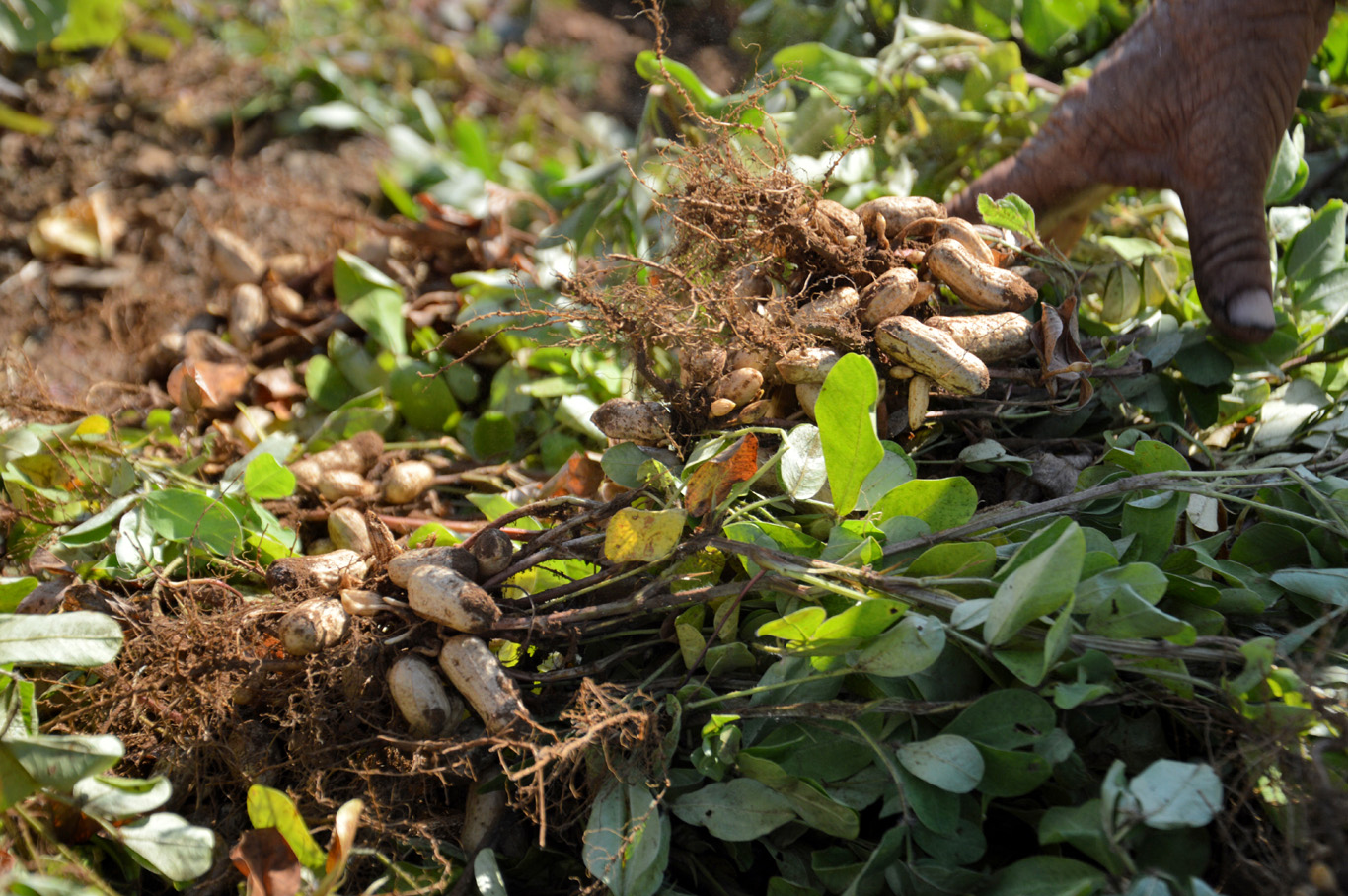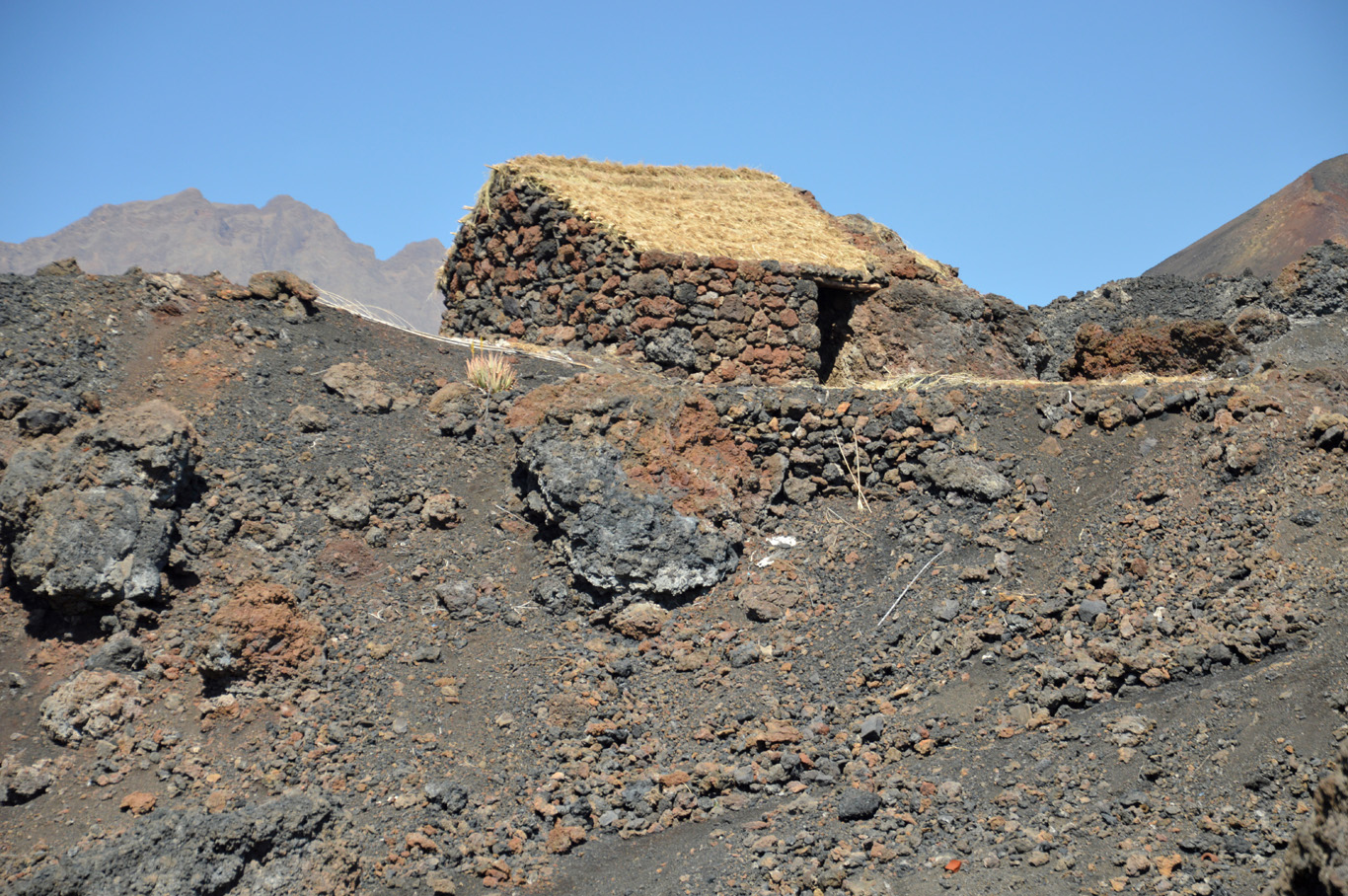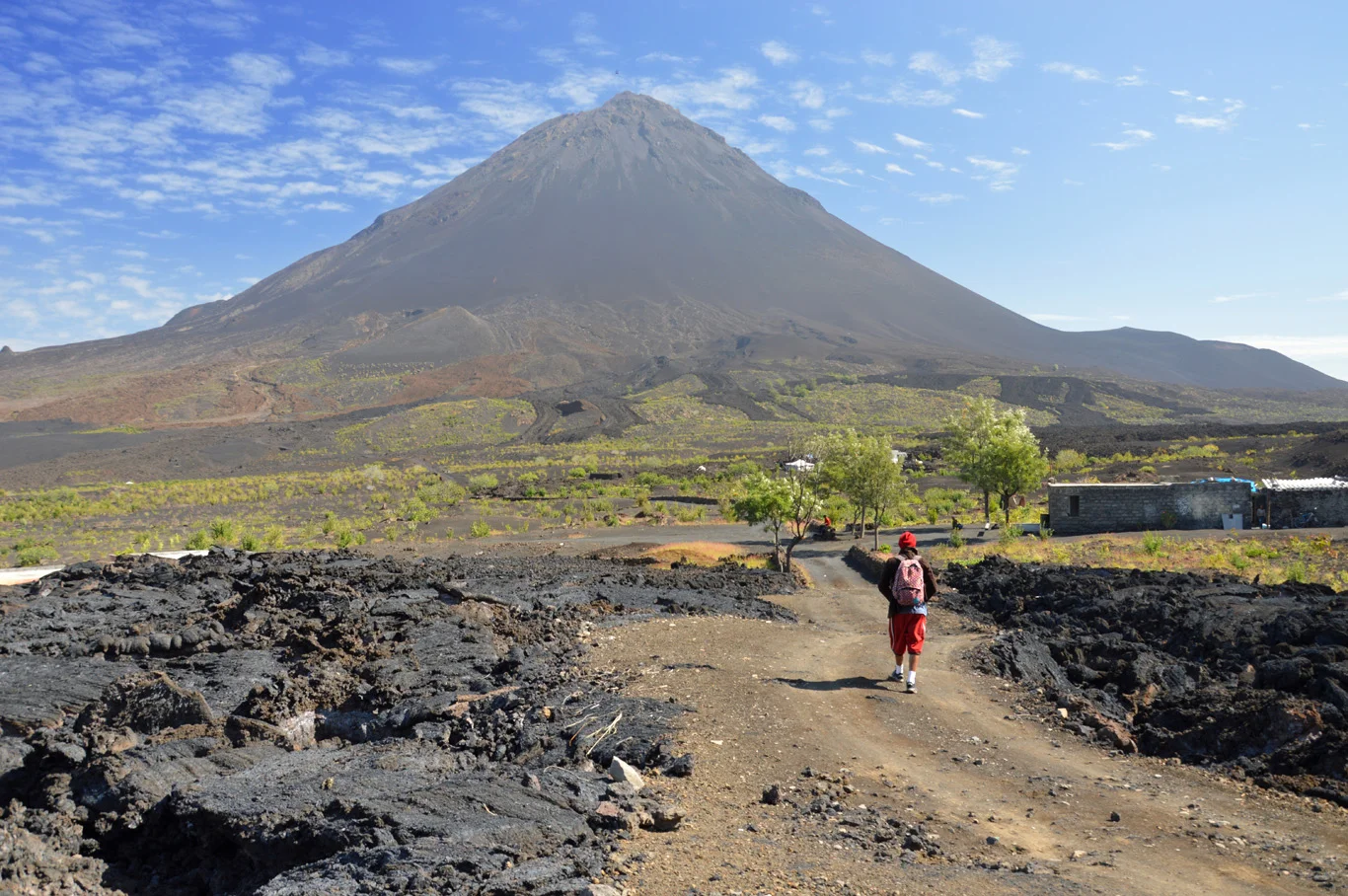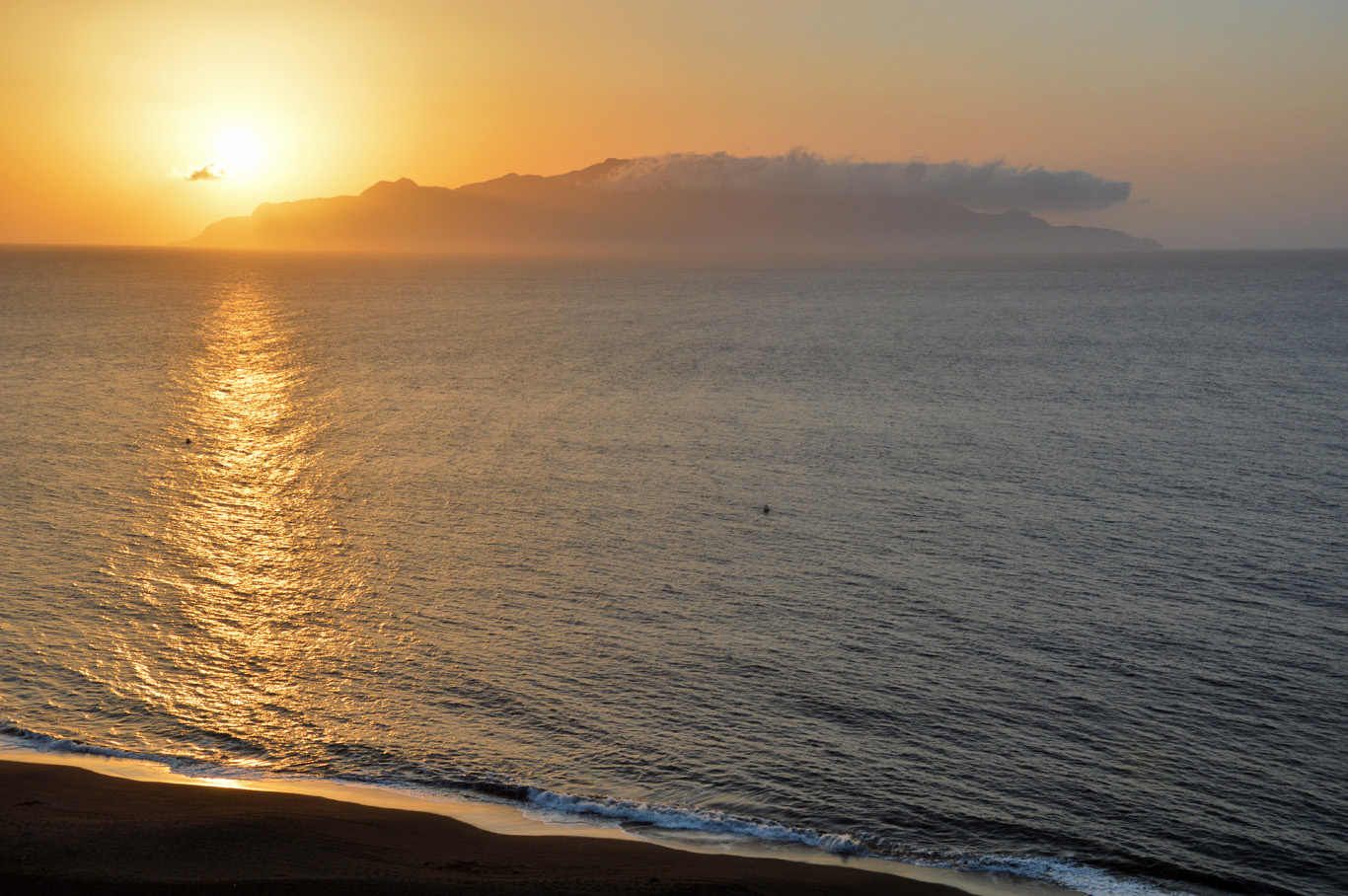Despite of the increasing popularity of the Sal island among European tourists, the other islands of the Cape Verde archipelago are pretty much unknown to an ordinary traveler. Although Sal is packed with resorts as well as fancy hotels and resembles a typical, ordinary beach destination, Fogo remains quiet, idyllic and perfect for those who love different, off the beaten path places. Not to mention its moon-like landscapes formed by the very recent eruption in 2014 of the volcanic peak overlooking the island. Fogo was by far my favorite island of Cape Verde.
How to get to Fogo
If you need more information on what's the best and cheapest way to reach the Cape Verde archipelago as well as obtaining the visa, have a look at my post about the island of Sal - I've described it all in detail.
The easiest way to get to Fogo is to fly or take a ferry from Praia on Santiago island - the capital of Cape Verde. From Sal, it's a bit more difficult.
As we landed in Sal from Europe, we booked a flight to Praia first and then took a ferry to Fogo and Brava - the closest island to Fogo (which is also amazing and worth seeing). Although the fare from Europe to Cape Verde (most often to Sal or Boa Vista islands) may be ridiculously cheap (for such a distance), the internal travel between the islands can be confusing and quite expensive. The flight from Sal to Fogo via Praia in Santiago is around 80 EUR/92 USD one way but can get higher. You can have a look and check the fares at the official website of Cabo Verde airlines here.
After the flight from Sal to Santiago, we stayed on the Santiago island for a couple of days and afterwards took a ferry from Praia (Santiago's capital) to Brava - another amazing island (take a look at my post about it). It cost around 4000 CVE (40 EUR/50 USD one way) and takes 7 hours or so. On the way back from Brava, we stopped in Fogo (it took around 1 hour and the price was around 15 USD).
Note that ferries or flights can be sold out, so make sure you'll book everything in advance. Also, delays and cancellations are pretty common. Having said that, do go around and visit other islands - do not stay only in Sal for too long! You'll miss a lot if you do - even though the islands are pretty close to one another, they are so diverse and different.
Accommodation in Fogo and how to get around
The range of accommodation in Fogo is not as wide as in Sal or Boa Vista. If you're on a budget, the best way is to use Airbnb. This way, you can stay with a local and they'll be able to help you out with many things as well as arrange a trip around the island as tourist offices and services are limited and way overpriced. A taxi from the ferry port to Sao Filipe is around 400 CVE (3.70 EUR/4.20 USD) and from the airport 300 CVE (2.70 EUR/3 USD). Prices may vary so make sure to bargain.
We rented our room on Airbnb in the capital of Fogo - Sao Filipe for a fraction of the price we'd have had to pay at a hotel. The owner also agreed to take us to the Fogo's main attraction - the spectacular Pico do Fogo - the volcanic pointy peak that dominates the horizon. The tour wasn't too cheap - 3500 CVE (32 EUR/37 USD) per person, but it was considerably cheaper than the official tourist agency rate.
Fruit plantations in Fogo
Peanuts
Green slopes before the main caldera
Winding road
Little house made of volcanic rock
Welcome to Fogo sign
The road cut off by solidified lava
Inside the caldera
Solidified river of lava flowing down the slope towards the interior
The lower peak - it was here where the 2014 eruption took place
Active volcano in the background
Moon-like scenery
Wild apples
Destroyed Cha das Caldeiras village - a fragment of a house sticking out of the lava field
Destroyed village
Lava covered the entire village
Life is getting back to normal - a cafe among destruction
New houses among the lava field
Pico do Fogo in the background
Building new houses
Round house on top of the lava
Local house with the view of the volcano
Almost like on the Moon
Pico do Fogo in the evening
Pico do Fogo and the lost village Cha das Caldeiras
Driving up the windy roads towards the volcanic peak, you'll notice how dramatically the landscape changes. From lush green fields full of tropical fruit and peanut plantations to completely dry, seemingly desert-like scenery surrounding the Pico do Fogo. Basically, from everywhere on Fogo you can see the sea as well as the nearby Brava island which always seems to be covered by a cloud creating a unique micro-climate (I've described Brava here).
On the way, you'll see some local children selling absolutely amazing, hand-made, carved off the volcanic rock, souvenirs. Do buy them as they are so original, beautiful and different from those at the typical stands in touristic places.
Now, there's time for a hike. The altitude here is quite high here, so it's fresher and cooler but the sun can be stronger. The walk up the steep slope of the volcano is easy and takes around 2 hours. From the lower part of the Pico do Fogo, exactly where the last eruption took place in 2014, you can still see smoke coming out. The shiny, black, solidified, rocky lava river shows the extent of the damage caused by the explosion. Do make sure that you don't come back the same way you came - ask your driver to wait for you at the village on the other side, it's a must-see site!
The main road to this village - the only one within the caldera (external crater) - Cha das Caldeiras was cut off and the village virtually ceased to exist covered by hot magma and mud. Up to this day, you can easily spot the remains of the houses sticking out of the black, rugged surface. Many residents left it, just a few stayed and are trying to make ends meet. There were no fatalities, luckily.
You'll see some new, round, unique houses popping up here and there on top of the new layer. We met one couple there who were attempting to build a guest house. It's a great idea - where else can you stay in a house made of volcanic rock in the actual crater with the incredible views of an active volcano itself? This place has so much potential - much more than boring Sal, nevertheless surprisingly, it sees almost no visitors.
Sao Filipe
After the exciting trip to the volcano, take some time to relax in the beautiful, colorful town of Sao Filipe. Similarly to other places in Cape Verde, Sao Filipe offers many amazing, local cafes and restaurants as well as vibrant colonial architecture.
Don't miss the beautiful graffiti on the buildings, virtually everywhere you go, you'll see one. You can also admire the black, volcanic beach and the sunset with the island of Brava in the background - for me, it was one of the most beautiful and spectacular sunsets I've ever seen!
Sao Filipe
Sao Filipe
Beautiful church in Sao Filipe
Graffiti
Graffiti
Sao Filipe
Black volcanic beach in Sao Filipe
Sunset seen from Sao Filipe - Brava in the background
Related Posts
Copying without permission is not allowed. If you wish to use any of the site's content (photos or text) or work with us, please contact us.
We welcome questions, advice, support or criticism. However, spam comments will be removed.


